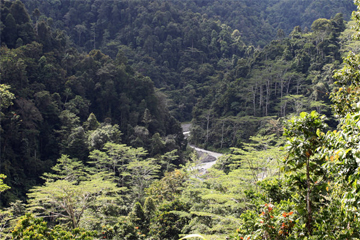One third of Indonesia's greenhouse gas emissions from deforestation originate from areas not officially defined as "forest" suggesting that efforts to reduce emissions from deforestation and degradation (REDD+) may fail unless they account for carbon across the country's entire landscape, warns a new report published by the World Agroforestry Centre (CGIAR).
The policy brief finds that up to 600 million tons of Indonesia's carbon emissions "occur outside institutionally defined forests" and are therefore not accounted for under the current national REDD+ policy, which, if implemented, would enable Indonesia to win compensation from industrialized countries for protecting its carbon-dense forests and peatlands as a climate change mechanism.
While REDD+ is seen as a promising way to fund forest conservation while simultaneously slowing climate change and generating opportunities for sustainable development, REDD+ in Indonesia has been fraught with concerns over what constitutes "forest." The forestry sector is keen on seeing plantations classified as forests, would could result in carbon finance subsidizing the conversion of "degraded" forests and woodlands — some of which may store substantial amounts of carbon — into industrial timber and oil palm plantations, an idea environmentalists find abhorrent.
The CGIAR report highlights this risk, noting that carbon stocks outside of institutional forests could be depleted by 2032 if current trends continue. It says "leakage", or deforestation displaced from areas protected from exploitation, would be a major driver of these emissions.
"If carbon emissions from outside the institutional forest are accounted for, it becomes clear that there are no net emission reductions in Indonesia," the brief states.
To avoid this outcome and put the debate over forest definitions to rest, the CGIAR report proposes a more comprehensive carbon accounting system, dubbed "Reducing Emissions from All Land Uses" (REALU).
"REALU can more effectively reduce net emissions, and ensure more locally-appropriate reduction activities," it states. "A REALU approach can overcome unclear forest definitions and help capture leakage of emissions between sectors."
The report argues that a more holistic approach would also better account for carbon stored in soils as well as emissions from agriculture. It concludes by noting that while the results are still preliminary, a "rethink" of REDD+ policy design may be prudent.
"REDD+ design in Indonesia (and similar conditions elsewhere) may require a serious rethinking," the authors write. "It may also bring the international REDD+ design back to the drawing board, particularly in light of arguments for a comprehensive approach to emission reduction from agriculture."
CITATION: Ekadinata A; van Noordwijk M; Dewi S and Minang P A. 2010. “Reducing emissions from deforestation, inside and outside the ‘forest’”. ASB PolicyBrief 16. ASB Partnership for the Tropical Forest Margins, Nairobi, Kenya. Available at: www.asb.cgiar.org


Tidak ada komentar:
Posting Komentar